| Twelfth United States Army Group | |
|---|---|
 Shoulder sleeve insignia | |
| Active | 1944–45 |
| Country | |
| Branch | |
| Type | Army group |
| Role | Army Group Headquarters |
| Size | 1.3 million men |
| Part of | Allied Expeditionary Force |
| Engagements | World War II |
| Commanders | |
| Notable commanders | Omar Bradley |
The Twelfth United States Army Group was the largest and most powerful United States Army formation ever to take to the field, commanding four field armies at its peak in 1945: First United States Army, Third United States Army, Ninth United States Army, and Fifteenth United States Army.[1] The order of battle across the four armies comprised 12 corps, containing a total of 48 divisions. Formed eight days after the Normandy landings, it initially controlled the First and the Third US Armies. Through various configurations in 1944 and 1945, the Twelfth US Army Group controlled the majority of American forces on the Western Front. It was commanded by General Omar Bradley with its headquarters established in London on 14 July 1944.
During the first week of the Normandy landings and the Battle of Normandy, Bradley's First US Army formed the right wing of the Allied lines. They were joined during July by the Third US Army, under the command of General George S. Patton, to form the Twelfth Army Group. Twelfth Army Group became operational in France on 1 August 1944. With General Omar Bradley assuming command of the Twelfth Army Group, Lieutenant General Courtney Hodges assumed command of the First Army. In addition, the USAAF's Ninth Air Force (not included in the 1.3 million soldiers figure) was attached to support the field armies of the Twelfth Army Group.[2]
Until 1 September 1944, when General Dwight D. Eisenhower assumed overall command of the Allied land forces in Northwest Europe, the US forces in Normandy were included with the British Second Army and the First Canadian Army in the British headquarters formation 21st Army Group, commanded by General Bernard Montgomery.
After the breakout from the beach-head at Normandy, the Twelfth Army Group formed the center of the Allied forces on the Western Front. To the north was the British 21st Army Group (the First Canadian and British Second)) and, to the south, advancing from their landing on the Mediterranean coast, was the Sixth United States Army Group (Seventh United States Army and French First Army).
As the Twelfth advanced through Germany in 1945, it grew to control four United States field armies: the First, the Third, the Ninth and the Fifteenth. By V-E Day, the Twelfth Army Group was a force that numbered over 1.3 million men.[3]
Twelfth Army Group was inactivated on 12 July 1945 upon Bradley's departure to become Director of the Veterans Administration. Its subordinate elements then became directly subordinate to United States Army Europe.
Staff
| Position | 1 August 1944 | 8 May 1945 |
|---|---|---|
| Commanding General | Lieutenant General Omar N. Bradley | General Omar N. Bradley |
| Chief of Staff | Major General Leven C. Allen | Major General Leven C. Allen |
| Deputy Chief of Staff | Brigadier General Robert W. Hasbrouck | Brigadier General Henry B. Lewis |
| Secretary, General Staff | Lieutenant Colonel Eldon L. Bailey | Colonel Eldon L. Bailey |
| G-1 (Personnel)[4] | Colonel Joseph J. O'Hare | Brigadier General Joseph O'Hare |
| G-2 (Intelligence)[4] | Brigadier General Edwin L Sibert | Brigadier General Edwin L. Sibert |
| G-3 (Operations and training)[4] | Brigadier General A. Franklin Kibler | Brigadier General A. Franklin Kibler |
| G-4 (Logistics)[4] | Brigadier General Raymond G. Moses | Brigadier General Raymond G. Moses |
| G-5 (Civil-military operations)[4] | Colonel Cornelius E. Ryan | Brigadier General Cornelius E. Ryan |
| Adjutant General | Brigadier General Henry B. Lewis | Colonel Charles R. Landon |
| Artillery Officer | Brigadier General John H. Hinds | Colonel Thomas B. Hedekin |
| Armored | Colonel Edwin K. Wright | Colonel Edwin K. Wright |
| Chaplain | Lieutenant Colonel Morgan J. O'Brien | |
| Chemical | Colonel John C. MacArthur | Colonel Patrick F. Powers |
| Engineer | Colonel Patrick H. Timothy | Brigadier General Patrick H. Timothy |
| Finance | Lieutenant Colonel Paul G. Hommeyer | Major Eugene R. Melton |
| Headquarters Commandant | Colonel Harry J. Karakas | Colonel Harry J. Karakas |
| Inspector General | Lieutenant Colonel Walter B. Cramer | Colonel Frank G. Ringland |
| Judge Advocate | Colonel Claude B. Mickelwait | Colonel Claude B. Mickelwait |
| Ordnance | Colonel Harold A. Nisley | Brigadier General Harold A. Nisley |
| P & PW | Colonel Clifford R. Powell | Colonel Francis J. Fitzgerald |
| Provost Marshal | Colonel Claud E. Stadtman | Colonel Claud E. Stadtman |
| Quartermaster | Colonel James W. Younger | Brigadier General James W. Younger |
| Signal | Colonel Garland C. Black | Brigadier General Garland C. Black |
| Special Service | Lieutenant Colonel Francis E. Conder | Colonel Thomas M. Crawford |
| Surgeon | Colonel Alvin L. Gorby | Colonel Alwin L Gorby |
| Transportation | Colonel Calvin L. Whittle | Colonel Calvin L. Whittle |
| Commanding General, Special Troops | Brigadier General Charles R. Doran | Brigadier General Charles R. Doran |
Order of battle – 8 May 1945
 12th Army Group – General Omar N. Bradley
12th Army Group – General Omar N. Bradley
 First Army – General Courtney H. Hodges
First Army – General Courtney H. Hodges
 78th Infantry Division – Major General Edwin P. Parker Jr.
78th Infantry Division – Major General Edwin P. Parker Jr. VII Corps – Lieutenant General J. Lawton Collins
VII Corps – Lieutenant General J. Lawton Collins
 3rd Armored Division – Brigadier General Doyle O. Hickey
3rd Armored Division – Brigadier General Doyle O. Hickey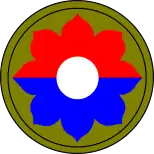 9th Infantry Division – Major General Louis A. Craig
9th Infantry Division – Major General Louis A. Craig 69th Infantry Division – Major General Emil F. Reinhardt
69th Infantry Division – Major General Emil F. Reinhardt 104th Infantry Division – Major General Terry de la Mesa Allen Sr.
104th Infantry Division – Major General Terry de la Mesa Allen Sr.
 VIII Corps – Major General Troy H. Middleton
VIII Corps – Major General Troy H. Middleton
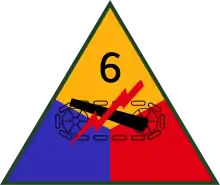 6th Armored Division – Major General Robert W. Grow
6th Armored Division – Major General Robert W. Grow 76th Infantry Division – Major General William R. Schmidt
76th Infantry Division – Major General William R. Schmidt 87th Infantry Division – Major General Frank L. Culin Jr.
87th Infantry Division – Major General Frank L. Culin Jr. 89th Infantry Division – Major General Thomas D. Finley
89th Infantry Division – Major General Thomas D. Finley
 Third Army – General George S. Patton, Jr.
Third Army – General George S. Patton, Jr.
 4th Infantry Division – Major General Harold W. Blakeley
4th Infantry Division – Major General Harold W. Blakeley 70th Infantry Division – Major General Allison J. Barnett
70th Infantry Division – Major General Allison J. Barnett III Corps – Major General James Van Fleet
III Corps – Major General James Van Fleet
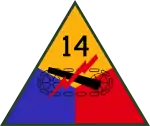 14th Armored Division – Major General Albert C. Smith
14th Armored Division – Major General Albert C. Smith 99th Infantry Division – Major General Walter E. Lauer
99th Infantry Division – Major General Walter E. Lauer
 V Corps – Major General Clarence R. Huebner
V Corps – Major General Clarence R. Huebner
 9th Armored Division – Major General John W. Leonard
9th Armored Division – Major General John W. Leonard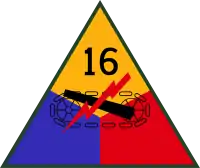 16th Armored Division – Brigadier General John L. Pierce
16th Armored Division – Brigadier General John L. Pierce.svg.png.webp) 1st Infantry Division – Major General Clift Andrus
1st Infantry Division – Major General Clift Andrus.svg.png.webp) 2nd Infantry Division – Major General Walter M. Robertson
2nd Infantry Division – Major General Walter M. Robertson 97th Infantry Division – Brigadier General Milton B. Halsey
97th Infantry Division – Brigadier General Milton B. Halsey
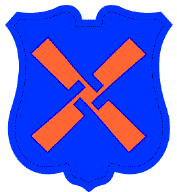 XII Corps – Major General Stafford LeRoy Irwin
XII Corps – Major General Stafford LeRoy Irwin
 4th Armored Division – Major General William M. Hoge
4th Armored Division – Major General William M. Hoge 11th Armored Division – Major General Holmes E. Dager
11th Armored Division – Major General Holmes E. Dager 5th Infantry Division – Major General Albert E. Brown
5th Infantry Division – Major General Albert E. Brown 26th Infantry Division – Major General Willard S. Paul
26th Infantry Division – Major General Willard S. Paul 90th Infantry Division – Major General Herbert L. Earnest
90th Infantry Division – Major General Herbert L. Earnest
 XX Corps – Major General Walton H. Walker
XX Corps – Major General Walton H. Walker
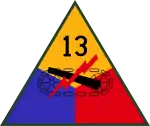 13th Armored Division – Major General John Millikin
13th Armored Division – Major General John Millikin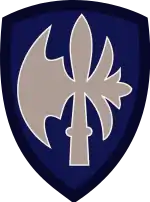 65th Infantry Division – Major General Stanley E. Reinhart
65th Infantry Division – Major General Stanley E. Reinhart 71st Infantry Division – Major General Willard G. Wyman
71st Infantry Division – Major General Willard G. Wyman 80th Infantry Division – Major General Horace L. McBride
80th Infantry Division – Major General Horace L. McBride
 Ninth Army – Lieutenant General William H. Simpson
Ninth Army – Lieutenant General William H. Simpson
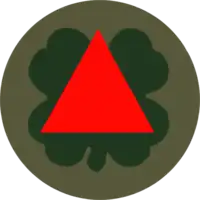 XIII Corps – Major General Alvan C. Gillem, Jr.
XIII Corps – Major General Alvan C. Gillem, Jr.
 35th Infantry Division – Major General Paul W. Baade
35th Infantry Division – Major General Paul W. Baade 84th Infantry Division – Major General Alexander R. Bolling
84th Infantry Division – Major General Alexander R. Bolling 102nd Infantry Division – Major General Frank A. Keating
102nd Infantry Division – Major General Frank A. Keating
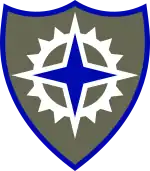 XVI Corps – Major General John B. Anderson
XVI Corps – Major General John B. Anderson
 29th Infantry Division – Major General Charles H. Gerhardt
29th Infantry Division – Major General Charles H. Gerhardt.svg.png.webp) 75th Infantry Division – Major General Ray E. Porter
75th Infantry Division – Major General Ray E. Porter 79th Infantry Division – Major General Ira T. Wyche
79th Infantry Division – Major General Ira T. Wyche 95th Infantry Division – Major General Harry L. Twaddle
95th Infantry Division – Major General Harry L. Twaddle
 XIX Corps – Major General Raymond S. McLain
XIX Corps – Major General Raymond S. McLain
 2nd Armored Division – Major General Isaac D. White
2nd Armored Division – Major General Isaac D. White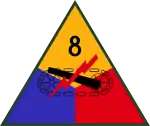 8th Armored Division – Major General John M. Devine
8th Armored Division – Major General John M. Devine 30th Infantry Division – Major General Leland S. Hobbs
30th Infantry Division – Major General Leland S. Hobbs 83rd Infantry Division – Major General Robert C. Macon
83rd Infantry Division – Major General Robert C. Macon
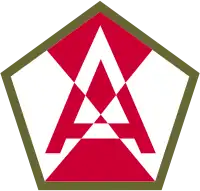 Fifteenth Army – Lieutenant General Leonard T. Gerow
Fifteenth Army – Lieutenant General Leonard T. Gerow
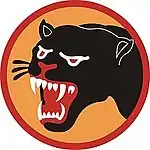 66th Infantry Division – Major General Herman F. Kramer
66th Infantry Division – Major General Herman F. Kramer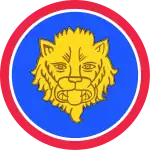 106th Infantry Division – Major General Donald A. Stroh
106th Infantry Division – Major General Donald A. Stroh XXII Corps – Major General Ernest N. Harmon
XXII Corps – Major General Ernest N. Harmon
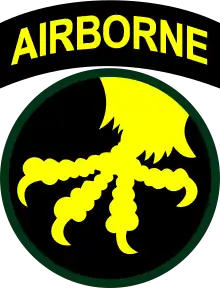 17th Airborne Division – Major General William M. Miley
17th Airborne Division – Major General William M. Miley 94th Infantry Division – Major General Harry J. Malony
94th Infantry Division – Major General Harry J. Malony
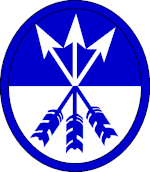 XXIII Corps – Major General Hugh J. Gaffey
XXIII Corps – Major General Hugh J. Gaffey
.svg.png.webp) 28th Infantry Division – Major General Norman D. Cota
28th Infantry Division – Major General Norman D. Cota
 XVIII Airborne Corps (attached to 21st Army Group) – Major General Matthew B. Ridgway
XVIII Airborne Corps (attached to 21st Army Group) – Major General Matthew B. Ridgway
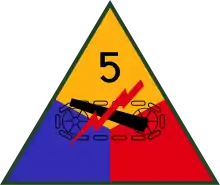 5th Armored Division – Major General Lunsford E. Oliver
5th Armored Division – Major General Lunsford E. Oliver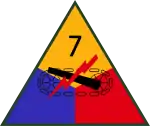 7th Armored Division – Major General Robert W. Hasbrouck
7th Armored Division – Major General Robert W. Hasbrouck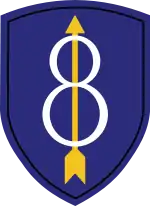 8th Infantry Division – Major General Bryant E. Moore
8th Infantry Division – Major General Bryant E. Moore 82nd Airborne Division – Major General James M. Gavin
82nd Airborne Division – Major General James M. Gavin
Source: Bradley, Omar, A Soldier's Story, New York: Henry Holt and Company (1950), pp. 557–561
References and notes
- ↑ Bradley, Omar N. (1983). A General's Life. Simon & Schuster. ISBN 978-0-671-41023-0.
- 1 2 Landon, Charles R., ed. (31 July 1945). Report of Operations (Final After Action Report) 12th Army Group (Report). Vol. I Summary. pp. 1, 4. OCLC 4520568. Retrieved 29 April 2022.
[page 1] 12th Army Group "Eagle" [w/talons holding shoulder sleeve insignias of the four numbered armies and the one numbered air force]; [page 4 - table of the headquarters: commander and personal staff; coordinating assistant chiefs of staff; coordinating special staff]
- ↑ CSI REPORT No. 6, Larger units: Theater Army – Army Group – Field Army, Combat Studies Institute, U.S. Army Command and General Staff College, Fort Leavenworth, Kansas, January 1985
- 1 2 3 4 5 "The General Staff System | Basic Structure". United States Army Special Operations Command History Office.
External links
- Military situation maps produced by the Engineering Section of the 12th Army Group – Library of Congress
- Omar Nelson Bradley, Lt. General FUSAG 12TH AG – Omar Bradley's D-Day June 6, 1944 Maps restored, preserved and displayed at Historical Registry
